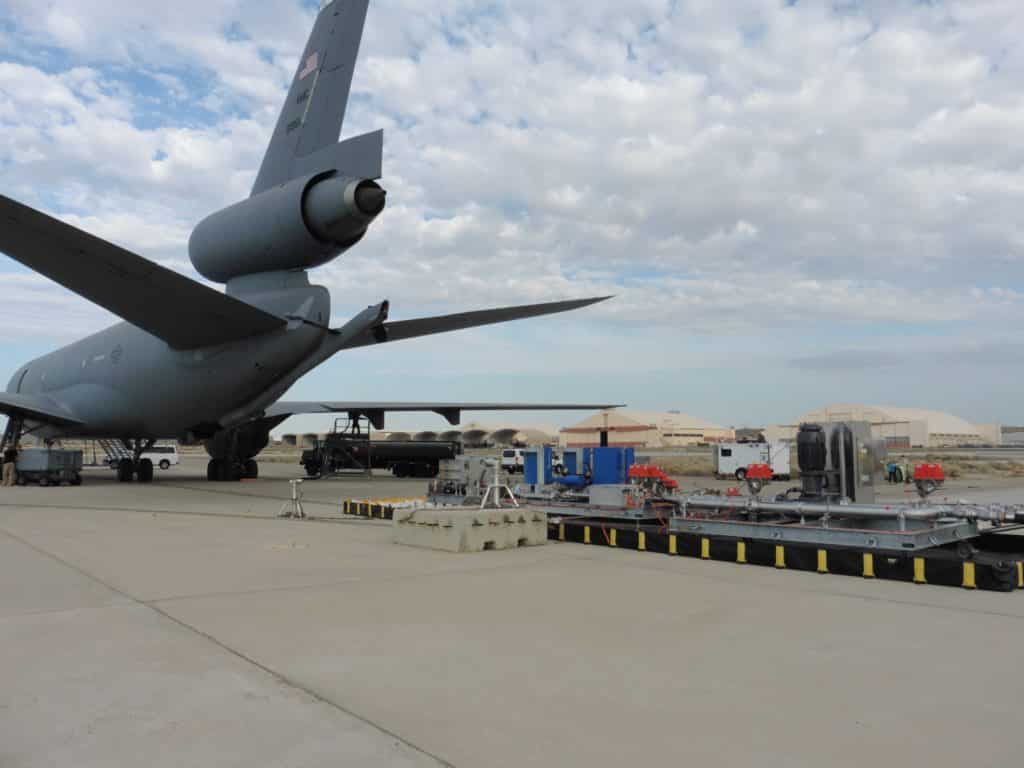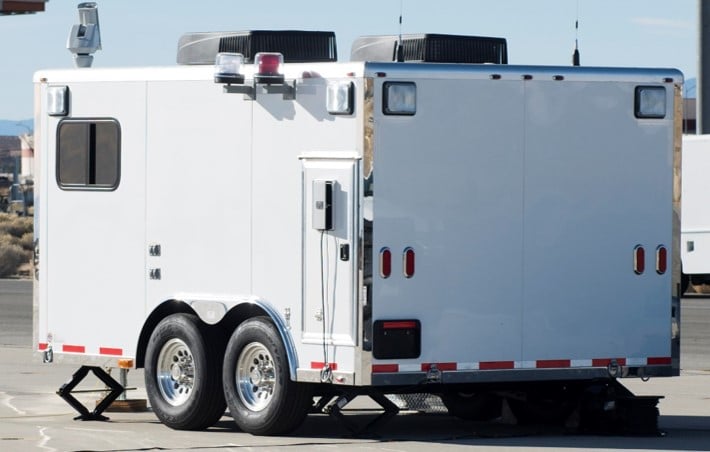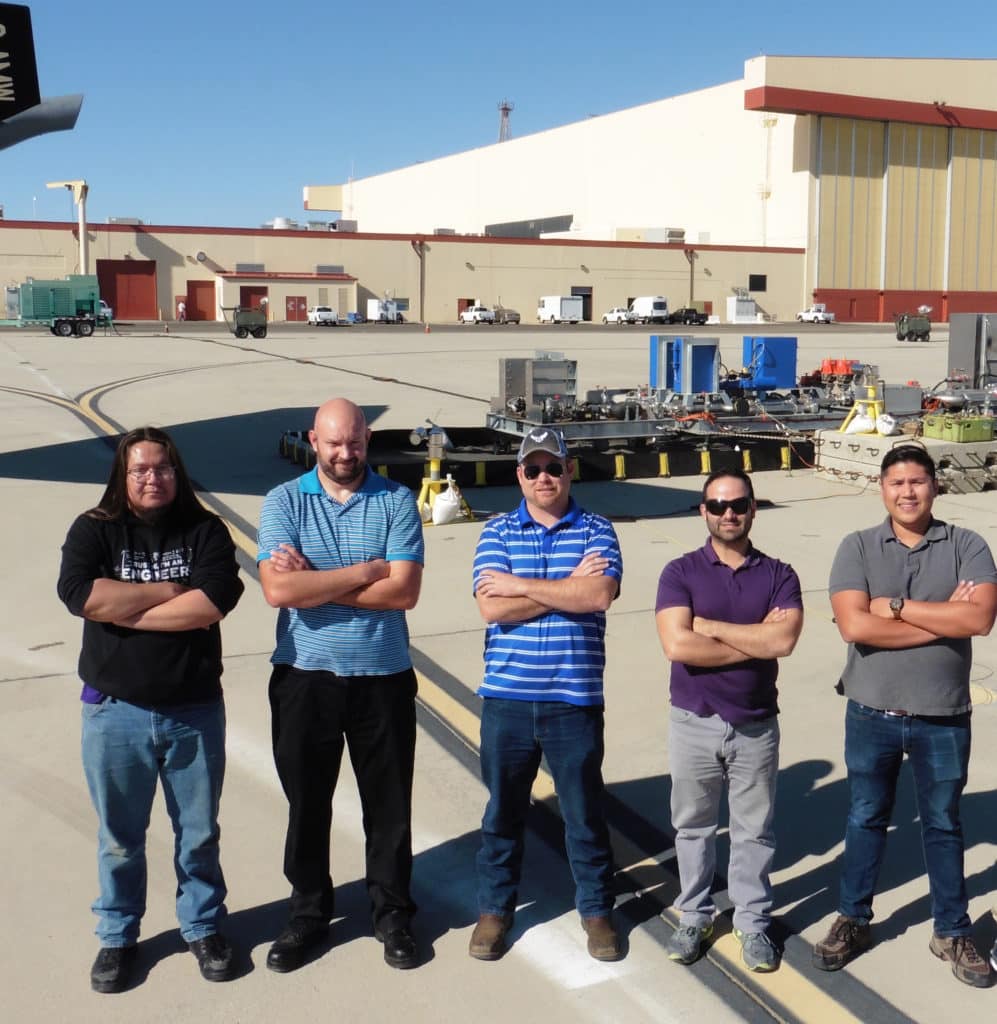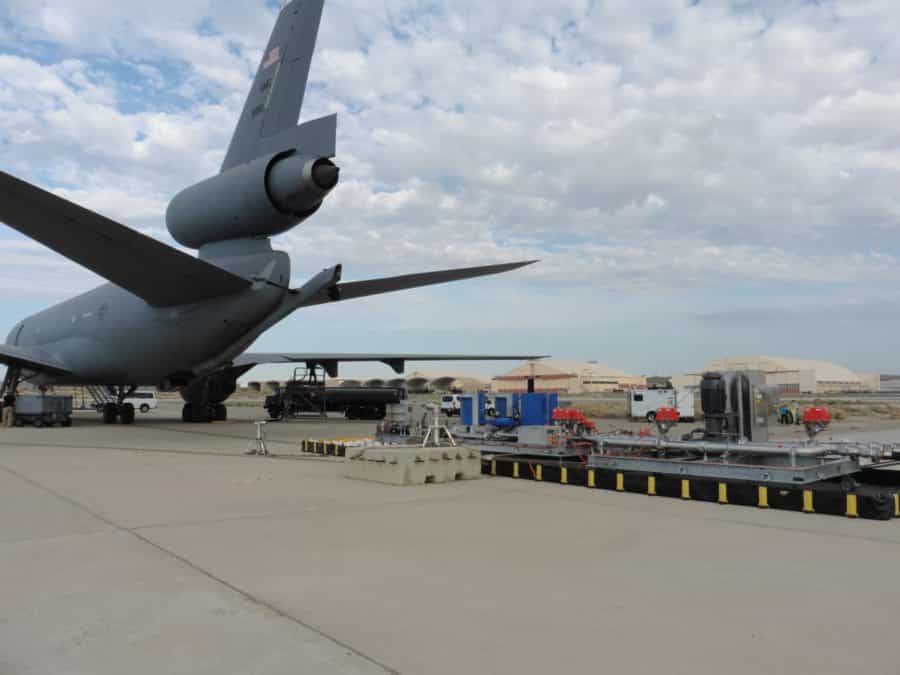An alternative name for JT4’s latest cost-efficient innovation, the Receiver Simulation Tool (RST)
What do 82 million Lysol® wipes, 14 million ounces of hand sanitizer and 20 million face masks have in common? They represent the amount of personal protective equipment (PPE) the government could have purchased with the $8 million in cost savings recently credited to JT4 on successful completion of the Receiver Simulation Tool (RST) at our Annex 1 operations at Edwards Air Force Base (AFB).
Concept and history
The concept of the RST was born when the Department of Defense (DoD) and Air Force Materiel Command (AFMC) required testing of coalition tankers. AFMC needed a ground-based system designed to simulate events that happen during aerial refueling between receiver aircraft and new tankers such as the KC-46 Pegasus, Australian KC-30 and Italian 767. The ideal tool would not simulate a specific receiver, but rather the different characteristics that affect surge pressures in receivers during fuel transfer. Receiver fuel system instrumentation is difficult and expensive to install on operational aircraft. However, with a tool such as RST, one could compare surge pressures seen with legacy tanker aircraft to new tanker aircraft, and only if surge pressures measured above the cleared thresholds would such costly instrumentation be required. As a result, developing the RST had the potential to save multiple programs time and money for aerial refueling certification with new tankers.
In June 2016, the 418th Flight Test Squadron (FTS) Instrumentation Flight Chief, Steve Parker, approached JT4 (then JT3) to determine if the development of the RST was within the expertise of our talented team at the 412th Test Wing. JT4 accepted the challenge and was fully prepared to meet the requirements and aggressive timelines set by the U.S Aerial Refueling Certification Agency (ARCA). In fact, JT4 was able to keep the total project cost below $2M to design, integrate, test and deliver this new capability to the USAF in just a short year and a half. Competing bids came in at $5M or more with estimates of three plus years for delivery.
Design and rigor
The design was managed for technical accuracy, safety and configuration management through a tailored process with peer reviews, preliminary design review (PDR), critical design review (CDR) and acceptance testing approval. The system was broken into two elements, the Fuel Rig Element (FRE) and the Mobile Control Room (MCR). Further transportability, modularity and compact design were driven by threshold requirements set by ARCA. As such, the FRE was further decomposed into three modules including the Boom Receptacle Stand (BRS), Multiline Fuel Manifold Assembly (MFMA) and the Fuel Deposit Module (FDM), each serving as a test section or interface to the many aspects of the refueling simulation process. The MCR trailer was designed to be the home of the controls and data acquisition systems of the RST, as well as accommodate up to five workstations to allow for live monitoring and active communication between support personnel and aircrew during a test.
In the few short years after its deliverance to Air Force service, the RST has already achieved several milestones and technical performance accolades, including baseline testing with legacy tankers KC-135 and KC-10A. The data collected in these baseline tests will be used as the threshold requirements that all new and foreign tankers must meet to acquire the USAF Aerial Refueling Certification. Recently, the RST also accomplished its first test against a foreign tanker, the Airbus A-330 Multi-Role Tanker Transport (MRTT), located in the Airbus facility in Getafe, Spain, an effort supported by several JT4 engineering, technician and maintenance personnel. The A-330 MRTT tanker testing results successfully determined its fuel delivery and surge pressure characteristics for mild to extreme flow conditions and valve closure rates. ARCA generated a memorandum stating that the Airbus A-330 MRTT is cleared to top-off/refuel at full pressures with USAF receivers, a critical step for supporting the global air-refueling program. For this A-330 MRTT test effort alone, ARCA recently estimated a cost avoidance of $8 million in receiver instrumentation, telemetry and dedicated air refueling flight test operations. Annex 1 Range Manager, Rey Garza, could not be more proud of his team and this accomplishment, stating, “I have to admit that I was a little nervous to take on the RST development because of the complexity and diverse technologies that encompass the system. However, I was reminded by my department managers that we had the right mix of talent to pull it off. Of course they were right. RST has been a success on so many levels. It’s truly a showcase of our engineering talent.”
The award-winning team
The RST project was a massive undertaking involving a large group of talented engineers and experts. From the initial concept through full development, this dedicated group engineered, designed, procured, built, tested, documented and validated the RST. This work was in addition to regular duties, resulting in frequent overtime and weekend hours. “Our guys were dedicated to this project from the start, and success was the only option,” said Chris Newman, the Annex 1 department manager who oversaw the team. “They worked confidently and tirelessly through all the hurdles to complete RST. I am so proud of the team and what they accomplished, not only for JT4, but for the Warfighter.”
In 2018, the RST Team received a Technical Achievement Award from the International Test and Evaluation Association (ITEA) for the outstanding use of the RST system, resulting in better, faster and more cost-effective results during ground fuel offloading and surge pressure simulations between receivers and new tankers.





**Approved for public release; Distribution is unlimited 412TW-PA-20219**

